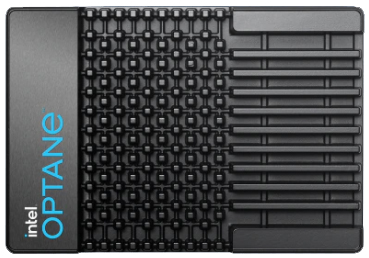
 Intel Optane SSDs are available in three families designed for specific market applications. The Intel Optane 905P for workstations and high performance desktops, as well as the Intel Optane DC drives consisting of the P4800X/P4801X and the P5801X. These drives are designed for enterprise use such as servers targeting high-performance storage environments, in transactional data applications, data analytics, cloud computing and scientific models. The 905P, P4800X/P4801X and P5801X series come in both a 2.5” U.2 as well as AIC (Add in Card) form factor, with the 905P also being available in an M2. 22110 configuration.
Intel Optane SSDs are available in three families designed for specific market applications. The Intel Optane 905P for workstations and high performance desktops, as well as the Intel Optane DC drives consisting of the P4800X/P4801X and the P5801X. These drives are designed for enterprise use such as servers targeting high-performance storage environments, in transactional data applications, data analytics, cloud computing and scientific models. The 905P, P4800X/P4801X and P5801X series come in both a 2.5” U.2 as well as AIC (Add in Card) form factor, with the 905P also being available in an M2. 22110 configuration.
At the high-end, the 905P differs from the DC Series drives in that the endurance ratings are 1/3 that of the enterprise drives, and they are missing critical features such as SMBus, but all versions are based on Intel’s 3D Xpoint memory. The P5801X based on PCI Gen 4.0 technology provides the highest performance and endurance of the Intel Optane SSD drives.
Intel Optane SSD drives dramatically improve system performance bringing new value to integrators, end clients and consumers. As an example of the performance benefits achieved through the implementation of Intel Optane SSD drives a study was done by the University of Pisa where they were able to reduce the time a patient spent getting an MRI from 40 minutes to 2 minutes.
